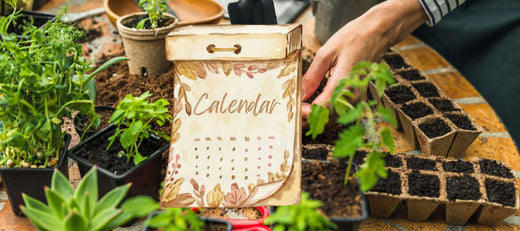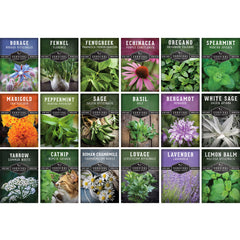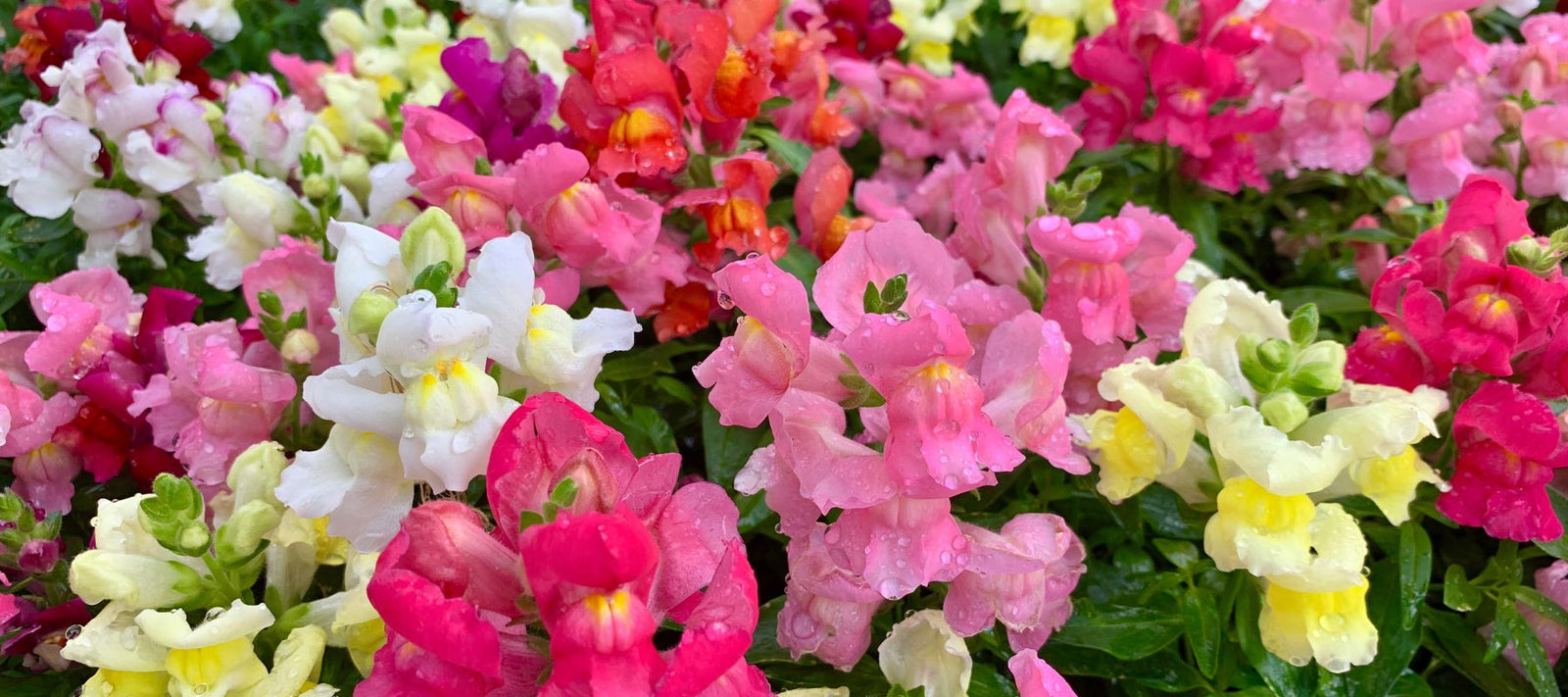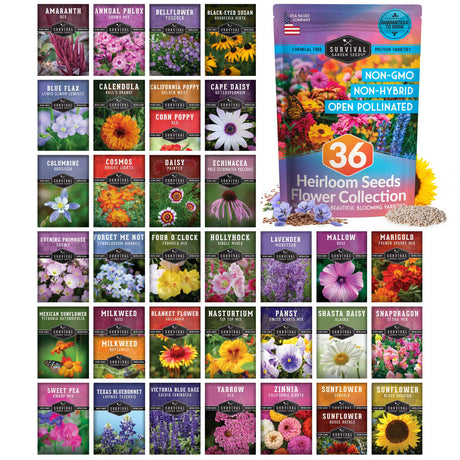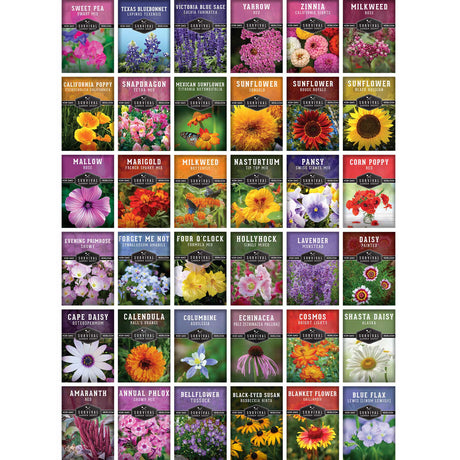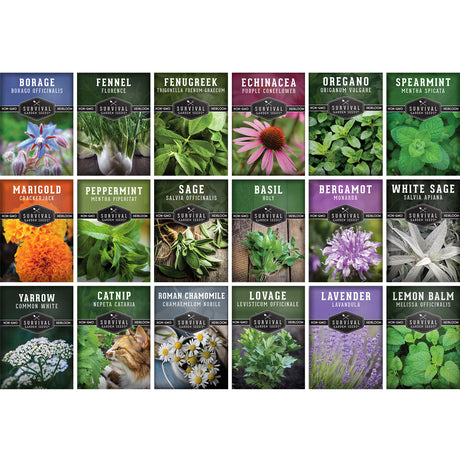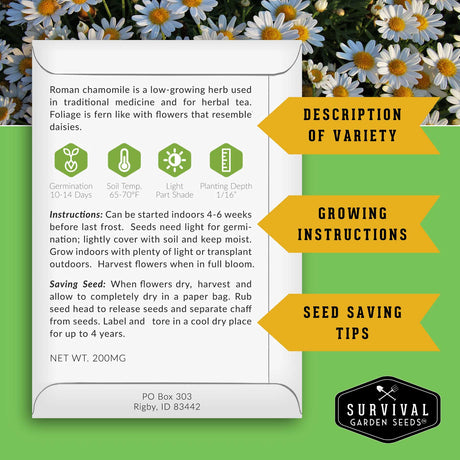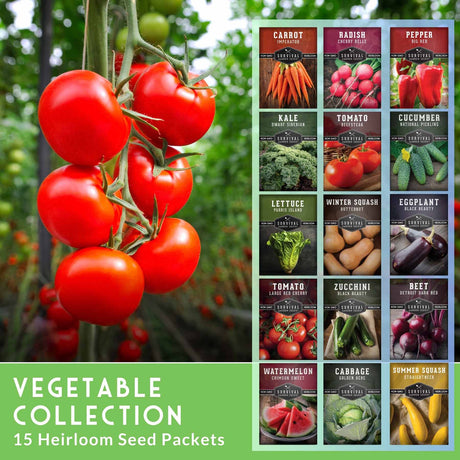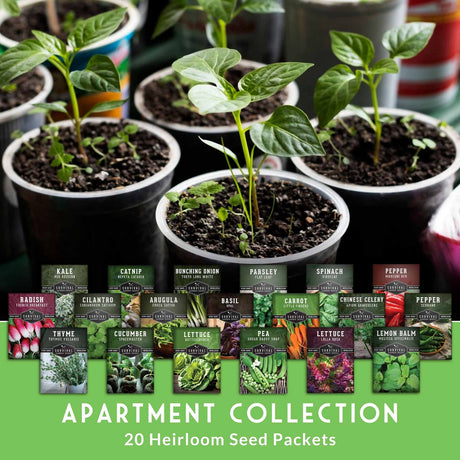If you are looking for long-lasting colorful blooms for your garden, nothing is quite as satisfying as snapdragons. Snapdragons come in a wide range of colors and various sizes. Their spike-like blooms make a wonderful addition to cut flower arrangements. Let's take a look at these lovely flowers, with some tips on how to grow them from seed to add some color to your life.

Snapdragons are native to the Mediterranean and southern Europe and are believed to have been native wildflowers in Spain and Italy. They were brought to America by colonists. The origin of the name comes from the idea that the flower heads look like a dragon’s snout, but many people also associate it with the snapping sound made when the flower buds are pinched open.
In warmer zones, snapdragons are perennial, but in most of the United States, they are grown as a hardy annual. They bloom best in cooler weather and can tolerate some frost. Snapdragons grow well in a variety of areas and will be happy in a container, raised bed, or just about anywhere in the garden as long as they get enough sunlight and water.
Growing Snapdragons From Seed
While not difficult to grow from seed, many people plant snapdragons as seedlings bought from garden centers and nurseries. There are a couple of challenges with growing snapdragons from seed, but they are easily overcome. The first challenge is the size of the seeds–they are very tiny, so you will need to handle them with care. The other challenge is that snapdragons grow very slowly, so be sure to start them well in advance of your last frost date so that they are large enough to bloom in early summer.
Germinating Snapdragon Seeds

Start your snapdragons indoors 10 to 12 weeks before your last frost date. This should give them enough time to grow strong enough to survive outdoors when it is time to plant them.
Use a standard seed-starting mix and sprinkle seeds evenly on the surface of the mix. If planting into seed pods, a handy tip for dealing with these tiny seeds is to pour your seeds into a dish and use a moistened toothpick to pick up a couple of seeds at a time to sow in each seed pod. Lightly press them into the soil. Snapdragon seeds need light to germinate. Hang grow lights about 2 inches above your containers, this will help ensure germination. Grow lights should be on for at least 16 hours per day. Germination will take about 2 weeks, so be patient.
Growing Snapdragon Seedlings
Keep the soil consistently moist. Thin the poorest performing seedlings by cutting them out. Do not pull them out because this will disturb the other plants.
After your last frost date, harden off your seedlings and plant them outdoors. Spacing will depend on the variety. Our Tetra Mix Snapdragons grow to about 18 to 24 inches tall and should be planted 6 to 8 inches apart. Consult your seed packet for proper spacing. When seedlings have developed six sets of true leaves, pinch off the top of the stem just below a leaf node leaving only 2 to 3 sets of leaves. This will encourage the plant to create branches, and you will have a bushier plant.
Encouraging Snapdragon Blooms
When snapdragons bloom, they produce beautiful stalks filled with color that make excellent, long-lasting cut flowers. However, snapdragons bloom best in cooler weather. The ideal blooming temperatures are nights at about 40°F and days at 70°F. They may stop blooming when daytime temperatures are above 80°F. You can plant your snapdragons in an area of partial shade that will help encourage blooms, but keep in mind that they need at least 6 hours of sunlight. Keep soil good and moist, as well. The plants will wilt if they dry out.
To harvest blooms for arrangements, cut the stems at the base when a few of the florets on the stalk have started to open but the top buds are still closed. Remove the lower leaves before putting them into a vase. Your flowers should last for several weeks. Be sure to dead-head spent blooms on plants and if the plants start to get “leggy” you can pinch them back to encourage more growth.
Common Problems with Growing Snapdragons
Snapdragons are generally pretty hardy plants. Deer and other wildlife usually leave them alone. They can be vulnerable to a fungus called snapdragon rust. This will first appear as yellow spots on the leaves and may get larger and darker, turning to brown or black. Remove and dispose of any affected plants. To prevent this make sure that there is plenty of airflow around the plants and do not water them at night. Aphids and spider mites may attack snapdragons. This can be treated with insecticidal soap.
Color and Interest for Your Garden
Snapdragons bloom in a rainbow of colors, from white to purple and everything in between. Their tall stalks with groups of florets add unique beauty to your gardening while attracting pollinators like butterflies, hummingbirds, and bumble bees. With long-lasting blooms, snapdragons will provide you with a continuous source of joy throughout the growing season. Bring home the beauty of snapdragons with our Snapdragon Tetra Mix Seeds, featuring warm shades of yellow, pinks, peaches, burgundy, and reds. Shop now for plenty of time to sow your snapdragon seeds and transform your garden into a colorful haven.

